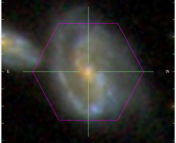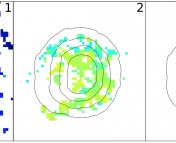
The undergrad research series is where we feature the research that you’re doing. If you’ve missed the previous installments, you can find them under the “Undergraduate Research” category here.
Are you doing an REU this summer? Were you working on an astro research project during this past school year? If you, too, have been working on a project that you want to share, we want to hear from you! Think you’re up to the challenge of describing your research carefully and clearly to a broad audience, in only one paragraph? Then send us a summary of it!
You can share what you’re doing by clicking here and using the form provided to submit a brief (fewer than 200 words) write-up of your work. The target audience is one familiar with astrophysics but not necessarily your specific subfield, so write clearly and try to avoid jargon. Feel free to also include either a visual regarding your research or else a photo of yourself.
We look forward to hearing from you!
************
Zenkar Kollurmath
University of Wisconsin-Madison
Zenkar is a second year undergraduate at the University of Wisconsin-Madison, where he works in Professor Amy Barger’s research group. This project was presented at the 236th AAS Summer Meeting.
Extreme emission-line galaxies (EELGs) are dwarf galaxies undergoing vigorous star formation and are characterized by very strong emission lines in their spectra. EELGs provide unique opportunities to study both early epochs of star formation and chemical evolution across cosmic history. In this project, we explored the broadband selection of EELGs at redshift of z~0.5, about 2000 MPc away from us (which corresponds to light emitted about 5 billion years ago), in the Hubble GOODS-North field. We use this field as it is a highly spectroscopically complete field, i.e. most objects already have spectra measured. Using spectral data from the DEIMOS instrument on the Keck Telescope, we selected sources with strong equivalent widths (EWs) (which correspond to high elemental abundances) in the [OIII]5007 emission line (between 80 and 800 Angstroms). We simulated galaxy spectra using the same range of EWs and ran them through the HST/WFC3 filter transmission curves to generate magnitudes for sample EELGs, which we further used to get colors (which are the magnitude differences between two filter bands). We compared these simulated colors with the colors derived from the EWs for the actual EELGs in our spectroscopic sample, to see how extreme the EELGs in the GOODS-North sample are. We then compared the spectra-derived colors for the EELGs in the GOODS-North sample with their photometric counterparts, to check our calculations. From here we identified some limitations on the photometric colors that can be used to identify EELG candidates in a wide survey. The current process used to identify EELGs in wide field surveys has been to narrow down the sample by photometric cuts and then checking the spectra of these selections to confirm the selection. In this project we took the reverse route, where we started with the spectra and established magnitudes and colors that can be used to refine the current selection criteria, helping cut down on the pool of EELG candidates that need spectroscopic confirmation.
Featured image credit: Hubble




